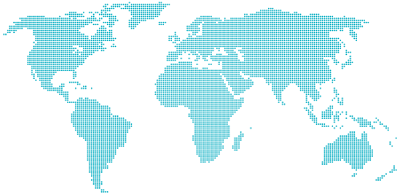
Image Feature Extraction: Unleashing Visual Insights
Published on
26 May 2023
Author
Real-life data collection involves significant amounts of data. It is essential to have a process for understanding this data. The data cannot be processed manually. Feature extraction plays a crucial role here.
What are the features?
In an image, features help identify objects by their parts or patterns. For example, a square has four corners and four edges, and we humans recognize it as a square based on these features. Property characteristics include corner points, edges, regions of interest, and ridges.
Feature extraction is part of the dimensionality reduction process, which divides and reduces raw data sets into more manageable groups. As a result, it will be easier for you to process. A large data set has a lot of variables, which is its most important characteristic. Computing resources are needed to process these variables. As a result, feature extraction reduces the amount of data by selecting and combining variables into features. Despite being easy to process, these features still describe the actual data set accurately and accurately.
What are the benefits of feature extraction?
Using the feature extraction technique can reduce the number of resources needed without sacrificing any important or relevant information when you have a large data set. Data set reduction can be achieved by feature extraction by removing redundant data.
By reducing the data, the model can be built with less machine learning effort and more quickly, speeding up the learning and generalization steps.
The application of feature extractionThe technique of Feature Extraction is widely used in Computer Vision for tasks such as:
- Recognition of objects
- Aligning and stitching images (to create panoramas)
- Reconstruction of 3D stereo images
- Autonomous vehicles/robot navigation
- And so much more.
In machine learning, image feature extraction involves extracting relevant and essential information from images to feed into models. Machines must comprehend images in their raw form because they are complex data structures. However, machine learning algorithms can quickly process it by transforming high-dimensional image data into a lower-dimensional feature space.
A feature extraction process transforms raw pixel data into a set of features that can be input into a machine learning algorithm.
In addition to grayscale pixel values, edges, textures, and shapes can be extracted as features using different techniques.
It is possible to extract relevant and essential information from images using appropriate feature extraction techniques, which can be used in circumstances such as self-driving cars, medical image analysis, and security surveillance.
Extraction of image features using CV2
A wide range of image feature extraction tools and techniques can be found in OpenCV (Open Source Computer Vision), an open-source computer vision and machine learning software library.
With CV2, many methods exist to detect the image features, each with advantages and disadvantages.
Preprocessing: OpenCV offers several functions for image preprocessing, such as image resizing, filtering, thresholding, and segmentation. As a result of these techniques, the quality of the image is enhanced, and valuable features are extracted.
- Reduction of noise: Gaussian blur, median blur, bilateral blur, and non-local means.
- Enhancing contrast: Gamma correction, histogram equalization, and adaptive histogram equalization.
- Conversion of RGB to HSV, RGB to YCbCr, and RGB to Lab color spaces.
- Transformations of geometric shapes: translations, rotations, scalings, and croppings.
- A feature extractor can detect edges, corners, and blobs of data.
Image quality can be improved, images can be made more suitable for further processing, and features can be extracted for object detection, image classification, and other purposes.
Feature Detection: Several features in an image are detected with OpenCV, including corners, edges, blobs, and lines. Tracking, detecting, and recognizing objects can be done using these features.
- Harris corner detector: It searches for regions with high spatial derivatives in an image to locate corners.
- Corner detector Shi-Tomasi: The corner strength of this detector is calculated by a different formula than that of Harris corner detectors.
- FAST corner detector: This quick and efficient corner detector is well-suited for real-time applications.
- ORB feature detector: Combined fast corner detector and a brief feature descriptor, the ORB feature detector is an advanced version of the FAST corner detector. Besides being prompt and efficient, it also performs well.
- SIFT feature detector: A SIFT feature detector invariant to scale, rotation, and illumination is one of the most popular feature detectors. The performance of this detector is better than that of the other detectors, but it is more computationally expensive.
A feature detector can detect objects, register images, and perform other tasks with images.
Feature Description: SIFT, SURF, and ORB functions are also provided in OpenCV for describing the features detected in an image. The descriptions are used to identify objects in different poses and lighting conditions and to match features across images.
- BRIEF: Descriptors of this type are binary descriptors, which are fast and efficient to compute.
- ORB: This descriptor combines the FAST corner detector with the BRIEF descriptor. It has good performance, is fast, and is efficient.
- SIFT: The SIFT descriptor is a popular feature descriptor stable when scale, rotation, and illumination changes are made. The performance of this descriptor is better than that of the other descriptors, despite its higher computational cost.
- SURF: With its fast performance, this descriptor is still very robust and can be used for a wide range of scale, rotation, and illumination changes.
Using these descriptors, you can identify each feature in an image individually. In addition, matching features between images can be done using this identifier.
Object Detection: OpenCV supports pre-trained object detection models as Haar cascades in real-time applications. A custom object detection model can also be trained using its functions.
- Haar cascade classifiers: Using Haar cascade classifiers, negative and positive images are used to train the classifier. New images can then be detected using them.
- Deep learning object detectors: The discovery of objects is based on deep learning, which is trained on a large set of images and labels. Object detection can then be performed on new images using these methods.
Images and videos can be detected using these methods. Various applications use them, including self-driving cars, security, and video surveillance.
Deep Learning: Object detection, segmentation, and classification can be performed using OpenCV Deep Learning modules. The modules can be used with already trained models or to train custom models.
- Deep learning frameworks: Caffe, TensorFlow, and Torch/PyTorch are some deep learning frameworks that OpenCV supports.
- Deep learning models: A wide variety of deep learning models are included in OpenCV, such as ones for detecting objects, classifying images, and segmenting semantic information.
- Inference for deep learning models: OpenCV can run deep learning models on videos and images.
A deep learning application for computer vision can be developed and deployed with these tools.
Conclusion
Complex structures such as images must extract features in real-life data collection. The raw image data can be processed and comprehended more easily by machines when relevant and essential information is extracted from it. By utilizing feature extraction techniques, you can reduce data redundancy and improve the quality of your images, enabling you to perform tasks such as object recognition, image classification, and even autonomous navigation.
With OpenCV, you can extract image features using various tools and techniques, such as preprocessing, feature detection, and feature description, which each have their benefits and drawbacks. To achieve better performance and accuracy, developers can select and combine these techniques to create custom models tailored to specific applications.
With diverse applications, features can be extracted from medical images, self-driving cars, security surveillance, and more. The importance of feature extraction in processing complex image data will only grow as computer vision and machine learning advance.
Image feature extraction is informative and exciting since it provides insight into machine learning and computer vision challenges and opportunities. As technology advances, the opportunities for innovation and discovery in this field are boundless.

